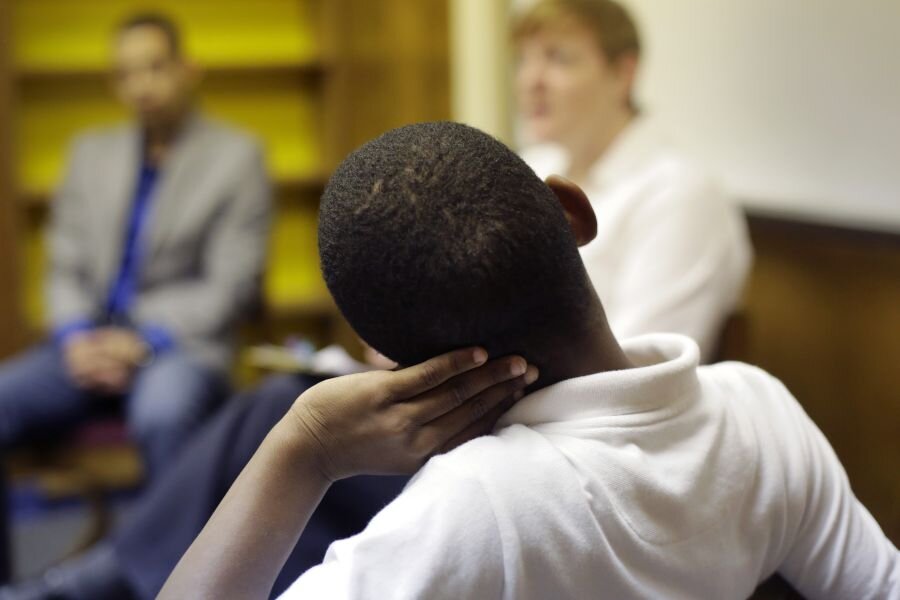L.A. schools swapped 'zero tolerance' for 'restorative justice.' Is it working?
Loading...
When a South Carolina sheriff's deputy threw a high school student from her chair in late October, tossing her across the classroom in a cellphone-captured video that quickly went viral, Americans caught a glimpse of how debates over school discipline play out every day in the nation's schools, where "zero tolerance" policies have led to an uptick in police referrals and out-of-school suspensions.
What makes students misbehave? What is the appropriate punishment? For years, educators have grappled with how to keep students and staff safe from fights and extreme disruptions, often combating disrespectfulness with policies often solve the immediate problems, but often also lead to to long-term academic failure.
California has led the way in an alternative practice, called "restorative justice," that holds promise in building students' understanding, responsibility, and relationships, while keeping students at their desks. But in Los Angeles, the nation's second-largest district, teachers are now alleging that administrators have put the policy in place with little training, creating chaos for students and staff alike.
On the face of it, banning suspensions for "defiance" has been a numerical success: as the Los Angeles Times reports, suspensions are down to 0.55 percent, compared to 8 percent in the 2007-2008 school year.
On the ground, though, some teachers allege that it's been a change for the worse: they claim that disciplinary issues are getting out-of-hand, and leaving teachers at a "breaking point," in the words of school union rep Art Lopez.
"Where is the justice for students who want to learn?" math teacher Michael Lam asked at a district forum, citing pressure to keep disruptive student in class.
Superintendent Ramon Cortines agrees that implementation had not been well thought-out. "You cannot piecemeal this kind of thing," he told the Times.
Psychologists and educational researchers support restorative justice as a means to build community, bolster students' problem-solving and accountability, and resolve conflicts, often through intense discussions that emphasize mutual respect between students, staff, and parents as they reflect on what caused problems in the first place and how kids can avoid them in the future.
It's an approach the American Psychological Association says is more in line with what we know about adolescent psychology, and can help combat the school-to-prison pipeline by avoiding police referrals. Instead, all parties collaborate to come up with an appropriate apology or punishment, with a focus on long-term problem solving.
Before his school adopted a restorative justice plan, one Oakland teen told the New York Times, "I didn't know how to express emotions with my mouth. I knew how to hit people." Skills like that, and the maturity they require, aren't built by simply banishing students from class, supporters say.
But across the country, such transformations can be slow in coming, as administrators wrestle with what exactly "restorative justice" should look like in their schools. That kind of confusion makes it even more difficult to train staff in what often amounts in a total discipline overhaul, which already requires substantial time, trainers, and effort to implement well.
The policies began a decade years ago in Oakland's schools, where concerns that discipline was disproportionately affecting nonwhite students led to an investigation by the US Department of Education's Office for Civil Rights.
"The waste of so much human potential is not only unacceptable in Oakland, but across the country," then-superintendent Tony Smith said when announcing the plan
Their patience seems to have paid off: nearly 80 percent of the district's teachers feel they are successfully implementing the new approach, and believe they should continue. But 40 percent still say they need more training to confidently address disciplinary issues.
In LA, just over a third have received training, and there are only 45 justice counselors for a system with over 650,000 students. Some schools report positive changes, but many others are still waiting for support, as teachers worry that the transitional period is sending the wrong message to students who act out.
But for now, LA is pressing forward with restorative justice; the union, for instance, is set to begin its own training program.
"This literally changes kids' lives and their experience in school," board president Steve Zimmer told the Times. "We have to get this right."








